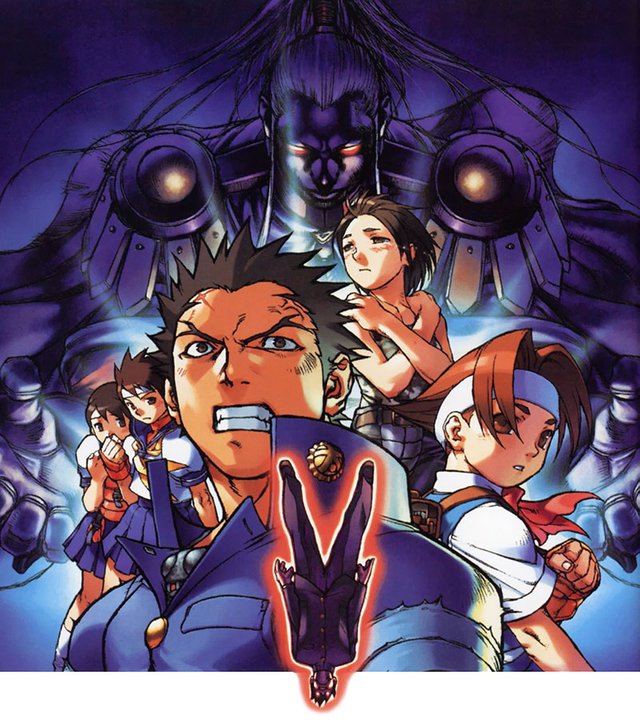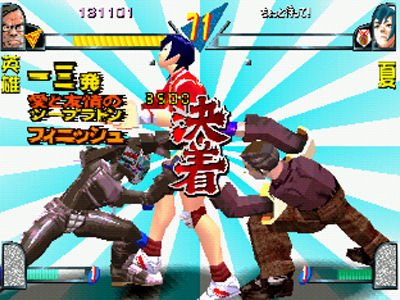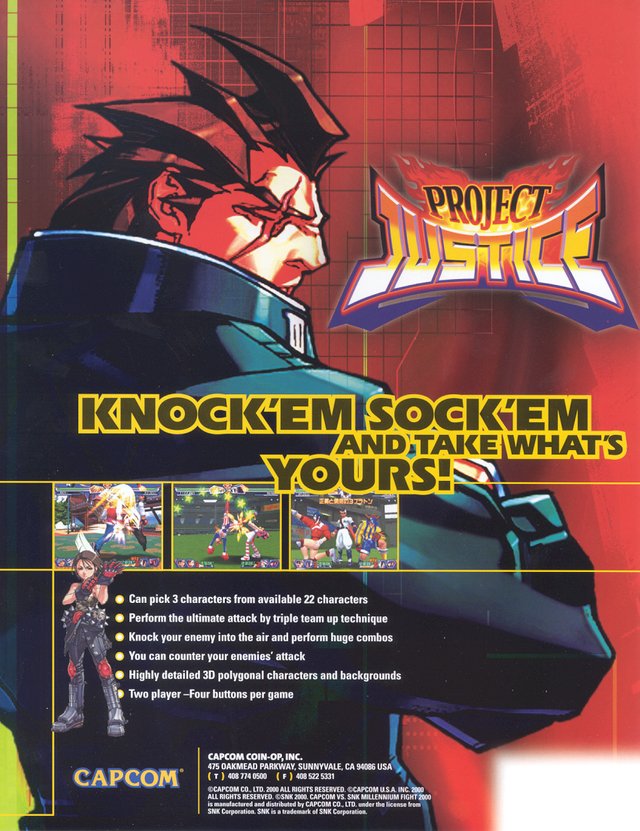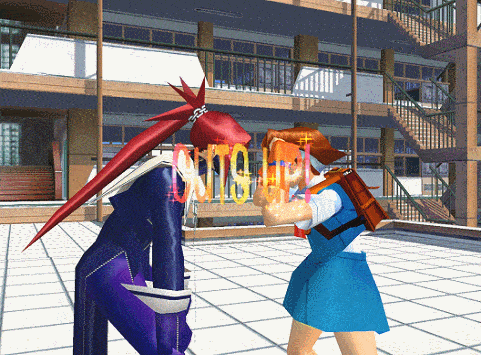Capcom's 'Rival Schools' celebrates its 25th anniversary

If you're a fan of the Street Fighter fighting game franchise, which is one of Capcom's most popular franchises that are still active, then you're probably familiar with Rival Schools: United By Fate. It was released to arcades in 1997 before it received a console port on the Sony PlayStation in 1998. When I saw the game at BestBuy during 1998's Christmas season, when I had Christmas money to spend, I debated on what games I wanted to buy.
I purchased Rival Schools: United By Fate and a few other fighting games and I do not have any regrets as this is one of the best fighting game titles that I have played. I still have my original copy of the game and I have the emulated rom to play on my laptop, too.
This November marked the 25th anniversary of this treasure trove of a fighting game.
Rival Schools: United by Fate is a high school-themed 2-versus-2 title in which players can pick any two characters from the roster. That includes having two of the same characters or two characters who represent different high schools, though it's not the case if you play the game's “Story Mode.”
The game used 3D polygonal sprites for all the characters while playing like a 2D fighting game title, making it one of the earliest 2.5D titles. I felt the game played similarly to the Street Fighter EX series, developed by Arika, which had 3D graphics.
I felt that the gameplay of Rival Schools: United By Fate was faster and smoother when compared to the first Street Fighter EX title.
Players would easily get the hang of playing Rival Schools: United By Fate if they were already familiar with playing Street Fighter II, Street Fighter Alpha, Fatal Fury, The King of Fighters, and other titles that play similarly.
Though the game is two-versus-two, you aren't able to switch between team members until the end of the first round.
Rival Schools: United By Fate borrows the “Alpha Counter” dynamic from the Street Fighter Alpha series and renames the “Tardy Counter.”
What separates the gameplay of Rival Schools from other team-up fighting games, especially Capcom's Marvel vs. Capcom franchise, is the special team-up. When you call your partner to help you out, one of three things will happen
Both teammates will perform a unique double-team attack. The kind of double-team attack performed will depend on who you have as your teammate.

Your teammate can do something that will restore a bit of your health.
Your teammate can fill your “Burning Vigor” meter, your super meter, by a few levels.
Rival Schools also had its own self-contained story to show that it exists within the Street Fighter universe but is not directly connected to it. The story takes place in the fictional Aoharu City in which a number of its local schools have been the targets of mysterious attacks on their students and faculty members.
All suspicions and clues lead to Justice High, the city's well-known elite academy, in which Hyo Imawano, the student body president, is the true perpetrator, as part of his plan to gradually conquer the world. In the Story Mode of Pacific High, Hyo says that he plans on taking control of the United States after he conquers all of Japan.
In Story Mode, players take control of teams that represent four different high schools
Taiyo High, which is a regular high school.
Gorin High, which is a sports-themed high school.
Pacific High, which is an international American school.
Gedo High, which is an all-boys school that currently houses juvenile delinquents.
The PlayStation port of the game came with two discs the regular game disc and the “Evolution Disc,” which had extra bonuses. The Evolution Disc added Sakura Kasugano, who debuted in Street Fighter Alpha 2, to the roster of playable characters. In the story, Sakura gets wind of the mysterious attacks and launches her investigation into the matter.
If you beat the Evolution Disc enough times, you'll unlock a trove of extra characters who are mostly random-made characters who have moves from other characters. You'll also unlock another version of Tiffany Lords, who wears her traditional school uniform.
The Evolution Disc also contains the “Tutorial Mode,” with Hayato Nekketsu serving as the instructor, which allows you to play with the game's many dynamics. Your progress through the mode is in the form of a progress report card, which is fitting because of the high school theme.
If you beat the game with the Evolution Disc, you are treated to two funny videos that break the fourth wall.
The first video implies a separate existence in which the roster of Rival Schools are actors performing in the film with Raizo Imawano, Batsu's father and the secondary villain, being the director. This happened to be my favorite ending video of the game, especially with most of the dudes getting pissed off at Raizo at the end, and then walking off the set.
I watched that video repeatedly for laughs.
The second video shows all of the Rival School characters getting along and enjoying a beachside barbecue which ends up with Batsu and Hyo making amends.
Another enhanced version of the PlayStation port was released later in 1998 but only in Japan, which added two new playable characters.

Capcom released a sequel in 2000, Project Justice, for the Sega Dreamcast. The gameplay for Project Justice switched from two-versus-two to three-versus-three. You could make a team-up attack with one or both of your teammates with the latter requiring more Burning Vigor bars. I found the three-member team-ups to be interesting, though I found the one involving Nagare Namikawa to be the MOST entertaining to watch.
Ever since Project Justice, Capcom hasn't created any more sequels. The legacy still lives on, though, through a number of the game's characters.

Kyosuke Kagami, Batsu's cousin and Hyo's twin brother, was made playable in Capcom vs. SNK: Mark of the Millennium 2001. In the game, he possesses a super move in the form of a triple attack with Batsu Ichimonji and Hinata Wakaba.
Batsu was made playable in Tatsunoko vs. Capcom: Cross Generation of Heroes and was given a special team-up attack with Casshern. He also appeared in Bandai Namco's Project X Zone as a solo unit that had a rivalry with Genghis Bahn of Sega's Fighting Vipers franchise.
Hideo Shimazu and Kyoko Minazuki, the brainwashed faculty members of Justice High, are a paired unit in Namco X Capcom.
Akira Kazama was added to Street Fighter V as part of the final season of DLC, which makes her the only Rival Schools character to be added to a Street Fighter roster. She has a super move that summons her older brother, Daigo Kazama, for a double-team attack.
Her special stage is the same as it was from Project Justice, but with Gan Isurugi and Eiji “Edge” Yamada standing in the background.
Karin Kanzuki's beach stage has cameo appearances by Hinata Wakaba and Tiffany Lords from Rival Schools.
Batsu and Akira are playable in the obscure title Street Fighter Online: Mouse Generation. The two of them were part of the main roster for Capcom Fighting All-Stars before the project was ultimately canceled and changed into Capcom Fighting Jam.
Akira was supposed to be part of the main cast of Marvel vs. Capcom: Infinite but did not make the final cut.
The legacy lives on and hopefully, Capcom will make a new installment of Rival Schools or port it to the current-gen consoles.
You can read my original version of the article here on Medium.
https://medium.com/@canhoangtran/happy-25th-to-capcoms-rival-schools-7c074d7212c9